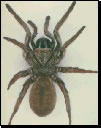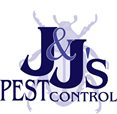Spiders can be classified in 3 categories:
GARDEN & INDOORS

White-tailed Spiders have a dark reddish to grey, cigar-shaped body (males about 12 mm, females up to 18 mm long) and dark orange-brown banded legs. It is found across southern Australia, south east Queensland, New South Wales, Victoria, Tasmania, Western Australia).

Wolf spiders are robust and agile hunters, and have good eyesight. Wolf spiders can be found in a wide range of habitats both coastal and inland. These include shrub-lands, woodland, wet coastal forest, alpine meadows and suburban gardens. Spider-lings disperse aerially and consequently wolf spiders have wide distributions.

Huntsman spiders are sometimes referred to as Wood Spiders in some parts of Australia, due to their common preference for inhabiting woody places (forest, mine shafts, woodpiles). In general, Huntsman spiders are not regarded as dangerous, and can be considered beneficial because they feed on insects (Many Australians will relocate Huntsmen to the garden rather than kill them).

Orb weaving spiders are found throughout Australia. The Garden Orb Weavers build large, strong, vertical orb webs. The commonly seen Garden Orb Weavers are 2 – 3 cm (female) or 1.5 – 2 cm (male) in body length. Most are stout, reddish-brown or grey spiders with a leaf-shaped pattern. Orb weavers are reluctant to bite. Symptoms are usually negligible or mild local pain, numbness and swelling. Occasionally nausea and dizziness can occur after a bite. Humped Orb Weavers have very small fangs and they are timid and reluctant to bite.
WEB SPINNERS

The Red-back spider is a potentially dangerous spider native to Australia. It resembles a Black widow spider. The female is easily recognizable by its black body with prominent red stripe on its abdomen. Females have a body length of about a centimeter while the male is smaller, being only 3 to 4 millimeters long. Red-backs are considered one of the most dangerous spiders in Australia. The Red-back spider has a neurotoxin venom which is toxic to humans with bites causing severe pain. There is an antivenom for Red-back bites which is commercially available.

The black house spider is a common species of Australian spider.Its web is a messy-looking construct of triangular sail-like shapes, usually stretched in the corner of the walls, windows etc. The black house spider is venomous, but is not considered dangerous to humans, except for possible infection of the bite. They are quite shy, only coming out of the nest to capture their prey, then quickly retreat.The black house spider is a favored prey of the white-tailed spider.

The golden silk orb-weavers are a genus of spiders noted for the impressive webs they weave. Nephila consists of numerous individual species found around the world. They are also commonly called golden orb-weavers, giant wood spiders or banana spiders. In North America, the golden silk orb-weavers (see also Nephila clavipes) are sometimes referred to as writing spiders due to occasional zigzag patterns (stabilimenta) built into their webs.

St Andrew’s Cross Spiders are named for their bright web decorations – zigzag ribbons of bluish-white silk that form a full or partial cross through the centere of the orb web. Females have a silvery carapace and a silver, yellow, red and black banded upper abdomen with two longitudinal yellow stripes below. The spider sits with the legs in pairs. The brown and cream colored males are smaller than females (body lengths 3 – 4 mm and 10 – 16 mm respectively).
GROUND DWELLERS

Australian funnel-web spiders are medium-to-large in size, with body lengths ranging from 1 cm to 5 cm (0.4″ to 2″). They are darkly colored, ranging from black to brown, with a glossy carapace covering the front part of the body. The primary range of the Australasian funnel-web spiders is the eastern coast of Australia, with specimens found in New South Wales, South Australia, Victoria, and Queensland.

Trapdoor spiders are medium-sized mygalomorph spiders that construct burrows with a cork-like trapdoor made of soil, vegetation and silk. The trapdoor is difficult to see when it is closed because the plant and soil materials effectively camouflage it. The trapdoor is hinged on one side with silk.

Mouse spiders are spiders are indigenous to Australia. There is evidence that the bite of a mouse spider is potentially as serious as that of an Australasian funnel-web spider; however recorded envenoming by this spider are rare. Funnel-web antivenom has been found to be an effective treatment for serious bites.

